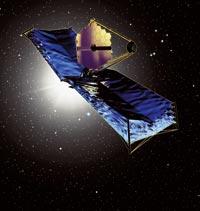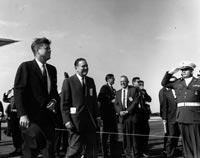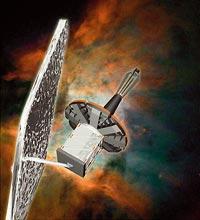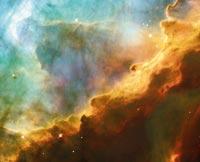They say it replaces Hubble

Big projects happen in astronomy. And for this, of course, preparations start well in advance. The future of the Hubble space telescope is in doubt, but even when ‘killed’ space observation will not stop.
There are eleven telescopes facing the starry sky. But the future will be better, greater, lighter and, as far as possible, cheaper than all of them. Although initially called it Next Generation Space Telescope, the next generation space telescope, the official name of this tool is now James Webb Space Telescope.
It is difficult to maintain the temptation to compare the limits of Hubble with the capacity of the JWST. Especially when heard so much that it will replace the JWST Hubble. But does it really replace Hubble's work? It is not so clear about technology and objectives.
In general, the two telescopes do not have the same field of work, as Hubble works mainly in the visible area and the ultraviolet (it also has an infrared camera) and JWST will focus all its attention on the infrared (as the Spitzer Telescope currently does). Thanks to this, the stars that Hubble cannot even detect for their excessive remoteness and coldness can be seen. In fact, you will receive the imprint of the farthest objects that have been observed so far.
Retrospective window in time
The light from the stars has made a long journey and has taken time to reach Earth (or its surroundings). Although light is very fast, the universe is so great that light takes billions of years to travel the path of the stars farthest to Earth. This means that the light we see is emitted long ago. Therefore, when looking at the remote stars it recedes in time, as you observe what happened long ago.

JWST receives light from the stars of the time when the universe was younger and less extensive. The area and time are known to astronomers as the dark zone, which is very unknown.
In addition, it must be taken into account that as the universe expands, the stars of our environment move away from us; and that the Doppler effect causes in the original star the light of the visible and ultraviolet area to slip into the infrared.
Another advantage of working in the infrared is that it highlights the stars that hide dust and other particles. Visible zone light cannot pass through these layers of dust, but infrared light can.
For this type of work, JWST will of course need the most advanced tooling. In the field of optics, for example, the mirror is the most important element and have prepared a very light mirror for the JWST weighing one-third of Hubble. This mirror is beryllium approximately 6.5 meters in diameter and consists of 18 hexagonal segments. To obtain the most accurate and clear image possible, these segments can be moved individually by order of the software prepared for this purpose.
Has expiry date
But JWST's work is limited: it is an infrared telescope, so it must work at a very cold temperature (about 33 Kelvin, that is, from zero to 238°C). Otherwise, the heat emitted by the apparatus itself, which in short are infrared waves, would produce interference. Therefore, the telescope has a cooling system: A sunscreen and a cooling system. And when the coolant runs out of the mission! Technicians announce that it will occur between 5 and 10 years after the launch of the telescope. The coolant inevitably ends and that cannot be avoided.

The problem will be much more serious if a device is damaged. And because of the need for a thermally stable environment, the JWST will orbit far from Earth, a million and a half kilometers, in the orbit Lagrange 2 or L2, too far for troubleshooting missions.
The new telescope must be within NASA's Origins program, and Hubble itself, so many of the objectives of both telescopes are compatible. Incidentally, it must be said that they are very important objectives: to determine the appearance of the universe, to explain the evolution of galaxies, to understand how stars are born and formed, to determine how the current chemical composition of the universe was formed and to demonstrate the nature and abundance of dark matter.
In short, the achievement of all these objectives responds to the basic questions of astronomy, which is the objective of the Origins program, that is, how many years does the universe have? What does it look like? And what will be the fate of the universe? These things are not the midnight cough of the goat.
To achieve all these objectives, the telescope will have different scientific tools. These tools will be in a module and the telescope will consist of two other modules: the container itself (where the tool control software will go) and the module of optical elements (with mirrors and so on).
Telescope instrumentation
The telescope equipment has been designed to work in the infrared field. A camera will work in the near infrared (wavelength of 0.6-5.0 micrometers) and will have a coronograph. It will also have a spectrograph that interacts in the same range of wavelengths, capable in turn of elaborating a spectrum of one hundred objects, and another instrument that will act in the central infrared (5-27 micrometers). According to experts, it will be a versatile tool.

know the origin and evolution of the universe.
These tools will be prepared by ESA and NASA. But they are useless if the object is not accurately identified, either a star or a planet. To do this, JWST has ‘fine orientation sensors’. These sensors will be based on a catalogue of stars and identify objects. These sensors are prepared by the Canadian Space Agency.
In this project, European, American and Canadian space agencies work. The launch day is still far away, predictably in August 2011, but preparing a telescope with the latest news is not a joke and the formations are already underway. The project is also defined, but in the next six years there will be more than one change as science and technology move forward.
Next generation space observatories
James Webb The Space Telescope (JWST) is not the only telescope in preparation. Other telescopes that will soon be launched into space are:
- The next release will be Corot in April 2006 and will look for planets in stone around the stars.

- In February 2007 two new telescopes are put into orbit: Herschel and Plank . Herschel will follow the genesis and evolution of nearby galaxies and analyze the chemical composition of the atmosphere and surface of comets, satellites and planets. For its part, Plan will send data to determine the Hubble constant, among others, but the mission will only last two or three years.
- In February 2014 two new telescopes will be launched: Darwin and Xeus . The Darwin Observatory will consist of six telescopes that will look together for traces of life on planets similar to Earth. On the other hand, it will be an X-ray observatory, the most advanced so far.
With Hubble

Undoubtedly, the Hubble Telescope has achieved great success. The astronomer and the rest of astronomy fans have sent their fascinated photos to Earth. Among other things, it has given us the best photograph ever made to Mars (it was on March 10, 1997 and it is observed that the CO 2 layer of the North Pole is being sublimated).
According to experts, and especially according to NASA, it has reached many other destinations. According to them, it has helped calculate the age of the universe, sent data showing the existence of black holes, claimed that quasars are nuclei of galaxies fed by black holes, and sent evidence that the expansion of the universe is accelerating.

In addition, he has taken countless spectacular photographs: the birth of a star, the death of other stars, a comet against Jupiter...
But for now it is in doubt whether Hubble will continue to work. And after the accident of the ferry Columbia, with the excuse of insecurity, NASA plans not to carry out any repair in the Hubble. If so, it will stop working by 2007 and fall to Earth, probably to the Pacific.
However, the U.S. government is under great pressure not to do so. Experts from all nations have praised the work of Hubble and considered it essential to send reparation missions.

To date, four Hubble repair or upgrade missions have been carried out, designed to make these updates possible. Thanks to these missions, in addition to solving the problems that the telescope has had, newer tools have been installed and the telescope has had a higher performance than initially expected. And yet, as happened last year, the future of Hubble is questioned again.





